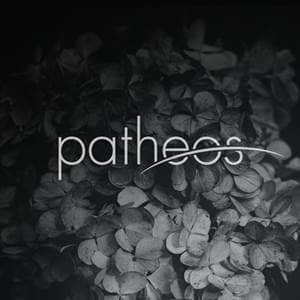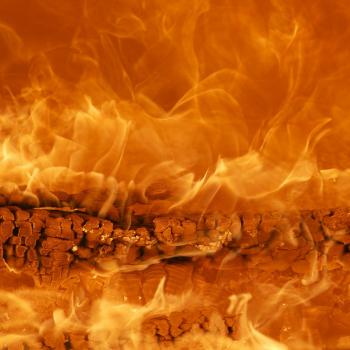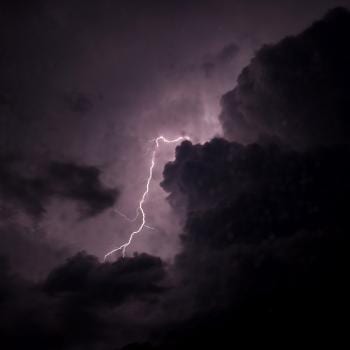Door in the Dragon’s Throat, pp. 12-28.
Dr. Jake Cooper has arrived at the airport. He’s “handsome, rugged, tall, and strong, with blond hair.” He has an “intense expression and observant eyes” and wears “a hat, to shade his face from the hot desert sun, and work clothes that had already been through many challenging experiences.” So basically, he’s Christian Indiana Jones.
Also, what exactly does it mean that his work clothes had already been through “many challenging experiences”? Are they dirty? Torn? Stained? What sort of challenging experiences are we talking about, anyway? He’s an archaeologist. Has he been crawling through caves or something?
“So this is Nepur,” he said to himself, his eyes taking it all in, from one end of the horizon to the other. Nepur was mostly desert: sand dunes, low, bristly brush, hot rocks, scorpions, and snakes. The population consisted mostly of nomadic tribes, roaming the desert, herding sheep and goats, riding camels, and dodging cobras and thieves. In the distance was Zahidah, the capital city, where very rich oil sheiks lived in splendid mansions and very poor beggars lived in shakes, where one group hoarded all the wealth while the other group begged for the essentials of life.
I just yesterday spent half a conversation with my husband expressing frustration about Saudi Arabia. I mentioned the guardianship laws that keep women under male control; he referenced the country’s use of what is effectively slave labor. Dictatorship, corruption, lack of free speech, harsh political repression. (I wanted to know how we justify being allies with Saudi Arabia while treating Iran as something unredeemable evil and untouchable. I still don’t have an answer.)
So when I respond critically to how Peretti is writing Nepur, I’m not suggesting that it’s wrong to criticize countries in the Middle East—that they’re somehow off limits. It’s not, and they’re not. It’s the way Peretti is doing it—and the things he’s focusing on—that are bothering me.
For example, why say that the nomadic tribes are “dodging cobras sand thieves”? I’m pretty sure that nomadic tribes living in these deserts for generations would have developed effective ways of dealing with scorpions, cobras, and other pests. Different kinds of knowledge are different. I may know how to use a computer, but I sure as heck would be useless when it comes to a cobra. But someone who lives where cobras are common? They’d have knowledge I don’t.
Anyway! Remember how Dr. Cooper brought his kids? It’s time to meet them!
His son Jay, fourteen, was busy unloading his own pet items: seismometer, sonar, cases of dynamite, and plastic explosives.
Yeah, that sounds safe.
He was blond, not too tall, very firm in build. He’d followed his father around the world for most of his life and it showed. If he wasn’t already tough as leather, he soon would be.
Now, bear the above in mind as we read about Lila:
Lila, thirteen, was years ahead of her age.
Wow, she must be homeschooled. (Sorry, a bit of an inside joke for the fellow homeschool alumni out there!)
Dr. Cooper’s wife had been killed in a tomb cave-in in Egypt several years earlier, and Lila immediately began to occupy the empty spot her mother had left behind.
Um, no. Also, hello, gender roles!
Archaeology was the only real life any of them knew, and Lila took on the role of technician, organizer, and nurse with a real determination.
Notice that there’s nothing in here about how tough Lila is. That’s a masculine thing. Instead, Lila gets determination—which I suppose is something!—and she gets to fill her mother’s spot as organizer and nurse. Jay is a human in his own right. Lila is a human in relation to her role.
(I know, I know, that last bit may be making it sound more extreme than it is—but that’s the vibe I’m getting.)
At the moment she was rechecking her inventory of food and provisions and making a note to herself to lay in extra medical supplies. In a place like this, someone was bound to get hurt sooner or later.
Oh dear, now I’m getting Tara Westover vibes.
Um, how did Lila’s mother get killed again? I’m pretty sure it’s pretty rare for an archeologist to die in a tomb cave-in. Were they using a fork lift? (Sorry, that’s a reference to Tara Westover’s book, Educated.)
Anyway.
Last week, I poo-pooed Al-Dallam’s concern about Dr. Cooper bringing his children. Some readers argued that Al-Dallam was right to focus on this and be upset about it—that bringing children to an archeological dig was inappropriate. So, here was my logic. Dr. Cooper’s use of his 13- and 14-year-old children as assistants on dangerous archeological digs is inappropriate. But at the time, Al-Dallam didn’t know that Dr. Cooper was using them as assistants—only that he brought them.
I have a relative who is an archeologist, and she once brought a baby along on a dig—along with a family member to care for the baby while she was working. Now yes, this was a baby. But I could imagine some hot-shot archeologist bringing his kids on a dig to get a taste of the local culture, and to do some touring in the local area. Using your young teens in place of assistants is so out there that I thought Al-Dallam would have assumed the case was the later—that perhaps the kids needed a guide so that they could explore the local areas while their father worked.
But this is really neither here nor there, because Jay and Lila aren’t here as tourists. They’re here to work for their father. And not just that, but Jay is handling the explosives, and Lila is the crew’s nurse. I can’t actually bring myself to be too terribly upset that they’ve been brought along, because kids are capable of more than we tend to think they are today, and when I was a teen, this sounded fun! Provided they have down time (and textbooks) and like traveling with their dad, I’m not all that concerned. It’s the explosive handling and nursing thing that worries me.
Well, and the fact that Dr. Cooper has presumably been told that this particular archeological project is very, very dangerous, and that people in other expeditions have died.
So, Jay and Lila and their dad have arrived in Nepur. The air field where their plane landed is surrounded by a “rusting cyclone fence.”
Directly opposite them, and for many, many yards along the fence in either direction, were crowds of people—women carrying half-clothed children, dirty, sweating oil workers, herders, beggars. A cross section of the population pressed against the fence like hungry cattle—nearly two hundred of them, staring, ever staring, not smiling or returning any greeting from the expedition party.
Okay, so, he compared them to animals. I mean, I guess it’s not the first time this book—he described Gozan, Al-Dallam’s assistant, as “a desert rat of a man.” But still.
Jay, Lila, and Dr. Cooper have a conversation about how creepy the people watching are (no really, they use that word). The issue isn’t the people watching—they get that all the time. It’s that the people are silent, staring, and morose, not excited and shouting at their arrival.
Dr. Cooper buckles his gun on, making sure the silent crowd can see, and turns to his children and three employees:
“Everyone be in a state of caution. The Nepurians are an unusually superstitious people. Not even Islam has taken a very strong hold here. What I’m saying is, the culture of these people makes them entirely unpredictable.”
Yikes.
First, it’s interesting that Islam is treated as something possibly better than these people’s native beliefs (which are, of course, portrayed as “superstitious”). This book was published in 1985, over a decade before the terrorist attacks of September 11th, 2001. Second, I’m pretty sure that archeologists usually take courses in anthropology. In fact, if they have to have a lot of contact with the local people, it might make sense to employ an anthropologist with knowledge in the area.
It’s the use of the term “entirely unpredictable” that’s throwing me. If you understand a people group’s culture, background, history, and norms, you won’t find their actions unpredictable. These people’s culture is not beyond studying and understanding, any more than ours is.
President Al-Dallam’s aide, Gozan, arrives in a jeep.
Jay, Lila, and the crew gave Gozan a cordial bow.
The aide grinned at Dr. Cooper. “You did that very well!”
Ha! Ha! They bow in the Middle East!
Dr. Cooper introduces his party, which includes three technicians—Jeff Brannigan, Tom Foster, and Bill White—in addition to himself and his children. Gozan objects again to Dr. Cooper’s bringing his children. Dr. Cooper responds that they are “highly trained” and “highly responsible.” Well, okay then.
Next, Dr. Cooper rejects Gozan’s suggestion that they stay in a hotel in the city, preferring instead to camp at the site. Gozan is shocked. And horrified. The Dragon’s Throat is too dangerous for that!
(After all of Peretti’s emphasis on cobras and scorpions, I’m curious—does Lila known how to treat venomous wounds? This seems like a lot to put on a literal child. She’s 13, for crying out loud.)
Gozan and Dr. Cooper are talking.
“I was fascinated to hear some of the folklore surrounding the Dragon’s Throat. I found you told legends very informative, and I think the old superstitions might give us some clues as to what this strange cavern really is.”
“You … you do not believe me, that the curse … that the dangers are real?”
“I didn’t say that. But we serve a mighty God who is greater than any curse, and His Son died to free use from all curses.”
So.
They load up the jeeps and head for the site. There’s witty banter between Dr. Cooper, who says “I don’t intend to die,” when he learns that the crowds following them have come to watch him die, and Gozan, who laughs and says, “You intend to tamper with the forbidden Door, doctor! That always brings death.” So that’s fun!
There’s lots of descriptions of the landscape that are every bit as stark as before. A wild dog “carrying the dripping entrails of a recent kill” runs across the road.
Finally, they arrive.
The site is in a valley. It’s a circular hole, or cavern, in the desert, surrounded by circle a half mile in diameter bereft of life, the sand a discolored ashen white. It’s not a meteor crater, Gozan says. Gozan tells stories of people who have gone into the circle and disappeared. Dr. Cooper chalks this all up to imagination. He sends his children to walk the perimeter, dispatches his men to test the sand, and uses a Geiger counter to test whatever Geiger counters test.
Gozan is terrified that they’re getting so close.
In order too go around the perimeter—which is well over a mile total—Jay and Lila have to pass behind some tall rocks (which is odd, because I thought the whole circle was just dead sand, but I guess not). While they’re passing around the rocks, they encounter a creepy man who tells them not to open the door in the Dragon’s Throat and then disappears, and then they disturb a cobra.
They’re terrified, pinned between a huge cobra and the rocks, shaking and trebling, and I’m wondering why the heck Dr. Cooper sent them around the circle, knowing that they’d have to be out of sight for a while, alone. Why not send one of his men with them, at least?
And then the chapter ends, and so too will I. But like? This all seems like a bad idea. Look, the whole party had to pause before getting out of their jeeps, because a huge cobra honed in on Dr. Cooper when he first stepped out. Fortunately, it got bored and moved off. And there was another cobra by another one of the jeeps too. And still Dr. Cooper sent his kids off, alone?
And they plan to camp here?
This is so not safe. Dr. Cooper keeps talking about Jay and Lila as his family, and after his wife’s death they’re all he has left. So why exactly is he putting them in danger like this?
I have a Patreon! Please support my writing!















